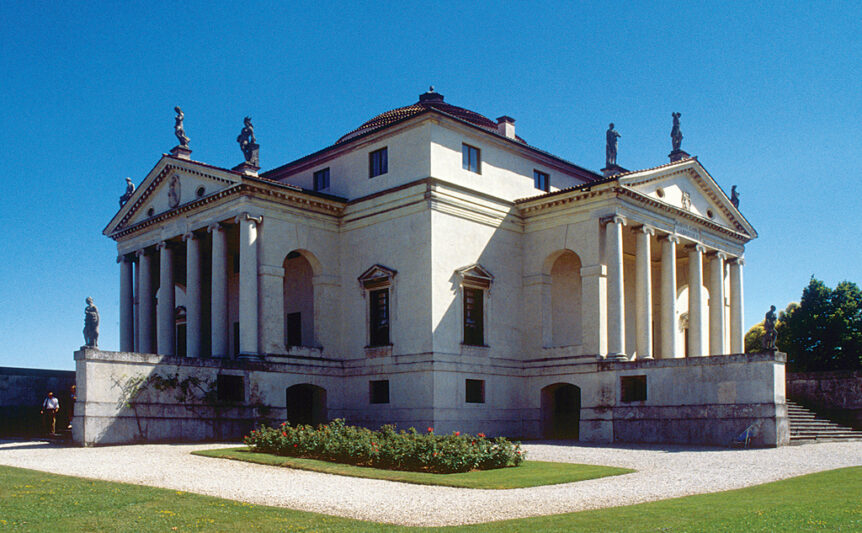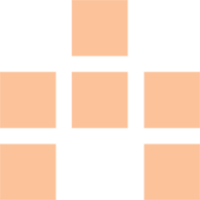
Beauty & Homeostasis as a Model for Architecture
Donald H. Ruggles, AIA
“I believe we are on the verge of a revolution in the way that we approach design…The field of design must have its own revolution, and only in this way will we expand, in a critical way, the parameters of design to reveal better the people for whom we design…The difference is that it will no longer be guided by the speculative constructs of borrowed theory but rather by a more basic understanding of the human organism and its existential engagement with the built environment. This is the epiphany that needs to take place-if indeed architectural design is to move beyond its present models and become a truly humanistic endeavor.”
“From Object to Experience”
Harry Francis Mallgrave
Have you been in a room you didn’t want to leave? Was it a space that calmed you, made you feel whole, nourished, hopeful? Have you known a building or a piece of art you went out of your way to engage with on a routine basis?
Or conversely, have you experienced a room or a building that is unsettling, one that overwhelms your senses to the point of discomfort? Did you sense you had to leave as quickly as possible? Or perhaps you know a building or piece of art you routinely go out of your way to avoid?
A more direct question is, are we subconsciously aware of buildings we routinely approach or avoid? This is the power of architecture and design at work, and neuroscience is unlocking the idea that art and architecture have such an effect on us, whether positive or negative, and why they do.
Recent research in neuroscience has shown that 95 percent of all neurological processing is intuitive and subconscious and is beyond our awareness.¹ One hundred percent of that subconscious processing deals with either survival or pleasure.² Our brains process a staggering 11 million bits of information per second and of that, 50 bits per second is conscious.³ Clearly our subconscious brains are the “main frame” components that run our bodies, control our actions and in general make our lives possible.
Neuroscientists working with biologists and psychologists have shown that survival and pleasure reactions that originate in the subconscious brain have very important health and well-being attributes.4 Survival is the strongest reaction we have in most situations and this reaction activates the “fight-or-flight” response characterized by a release of adrenaline that readies our bodies for survival and cortisol that shuts down bodily systems that are not needed for survival. A survival situation is characterized by raised heart rate, elevated blood pressure, a compromised cardiovascular system, appetite suppression, neuronal function compromises and a diminished immune system. The overall characterization of this reaction is one of stress taking up the body’s energy and attention, and the long-term result of stress is a general diminishment of your health and well-being potentially leading to catastrophic health results.5
Conversely a pleasure reaction is characterized by a release of dopamine and oxytocin into our blood stream that lowers our blood pressure, lowers our heart rate, improves our cardiovascular system performance and fully activates our immune system.6 The overall characterization is one of rest and relaxation, and a general sense of health and well-being. The long-term result here is the general strengthening of our overall mental and physical systems.
It is important to know that a survival reaction is short-lived, and upon the end of a survival event our bodily systems quickly seek to return to a pleasure state thus restoring our bodies to a state of equilibrium.7 The two events working together effectively is known as homeostasis and this is a state our bodies instinctually seek. Some scientists think a homeostatic balance is the single most important factor to living a long healthy life.8 Concisely, a life that is all stress is bad for our health, as we well know, and a life that is all pleasure is equally out of balance. The two must work in concert together.
Returning to the questions at the beginning of this paper: Have you ever been in a room you didn’t want to leave? This is a pleasure response. Your subliminal brain is telling you it is safe and that a state of rest and relaxation is achievable because the brain recognizes the situation or pattern as having the potential of pleasure. And, flowing from that recognition are multiple health benefits that subconsciously develop from a pleasure state of rest and relaxation. Importantly, this feeling of pleasure is actually the result of hormones being released into our bloodstream as a result of the neurological reward pathway being activated. This room is good for your health and well-being and your subliminal brain is telling you so.9
Conversely, the room or building that makes you unsettled is your subliminal brain telling you it is a stressful situation that is unsafe. Flowing from that stressful state are the many health and well-being diminishments outlined above. This room would not improve your health and well-being and is clearly a situation that one would subconsciously seek to avoid.10
Beauty is a pleasure response that is an effective counter-balance to a survival / stress reaction.11 We often seek beauty after we have encountered a stressful event as a means of achieving homeostasis. Think of a walk in a garden after a stressful day or a meditation session after a workout. This is the homeostatic function at work in your body. We instinctively yearn for this balance and we often take subconscious steps to ensure this yearning is satisfied. Even after a high-level stress event, once the threat has passed, we instinctively search for beauty in any form – such as a comfortable room to relax in – to return to a pleasure state.
The same analysis applies to architectural design. It is important to have architectural forms that engender excitement and a survival / stress reaction, as well as a pleasure and rest and relaxation / beauty reaction. Today, too often our buildings are over emphasizing forms that initiate a survival or stress reaction with little or no attention focused on pleasure inducing forms and patterns. Beauty and pleasure, it seems, has been left out of the design equation in recent years. This is a grave mistake as our health and well-being is dependent on both survival and pleasure components being present.12
Architecture is about shelter at its most fundamental quality. This is what humankind expects from architects. Closely attached to that expectation is the idea that the architecture will support our health and well-being. Without delivering these qualities, a structure is placing the occupant into a survival /stress mode, which is not healthy.13 Rather, architects should be charged with designing forms and spaces that support health and well-being. If you design to health and well-being, then the model will lead to a pleasure / beauty response that in turn leads to multiple health and well-being benefits.
The opening quote calls for an “…epiphany that needs to take place.” That epiphany is for architects to endorse and accept that neuroscience, biology and psychology have provided the profession with the information and means to improve our environment and the health and well-being of society in general. Additionally, architects should accept the utilization of the pleasure of beauty as the means to rebalance current-day design equations into a proper homeostatic balance. Frankly, our future health and well-being depend on it.
About the Author
Donald H. Ruggles, AIA, NCARB, ICAA, ANFA, is president of Ruggles Mabe Studio, a boutique residential architecture and interior design firm based in Colorado. Founded in 1970, the firm is dedicated to the idea that beauty can improve the lives of its clients. In 2017, Ruggles published his first book, “Beauty, Neuroscience & Architecture: Timeless Patterns & Their Impact on Our Well-Being,” which suggests beauty can and does make a difference in our lives, including improving many aspects of our health. You can reach Don at don@rugglesmabe.com or 303-355-2460, follow him on Twitter and connect with him on LinkedIn.
References
- Mlodinow, L. (2012). Subliminal: How Your Unconscious Mind Rules Your Behavior. New York: Pantheon Books, p. 34.
- Kandel, E. (2012). The Age of Insight: The Quest to Understand the Unconscious in Art, Mind, and Brain, from Vienna 1900 to the Present. New York: Random House, p. 325.
- Mlodinow, L. (2012). Subliminal: How Your Unconscious Mind Rules Your Behavior. New York: Pantheon Books, p. 33.
- Kandel, E. (2012). The Age of Insight: The Quest to Understand the Unconscious in Art, Mind, and Brain, from Vienna 1900 to the Present. New York: Random House, p. 499.
- Marchant, J. (2016). Cure, A Journey into the Science of Mind Over Body. New York: Broadway Books, pp. 132-133.
- Kandel, E. (2012). The Age of Insight: The Quest to Understand the Unconscious in Art, Mind, and Brain, from Vienna 1900 to the Present. New York: Random House, pp. 428-429.
- Marchant, J. (2016). Cure, A Journey into the Science of Mind Over Body. New York: Broadway Books, p. 136.
- Eberhard, J.P. (2009). Brain Landscape: The Coexistence of Neuroscience and Architecture. New York: Oxford University Press, pp. 151-152.
- Ferrucci, P. (2010). Beauty and the Soul: The Extraordinary Power of Everyday Beauty to Heal Your Life. New York: Penguin Books, p. 131.
- Ferrucci, P. (2010). Beauty and the Soul: The Extraordinary Power of Everyday Beauty to Heal Your Life. New York: Penguin Books, p. 160.
- Ferrucci, P. (2010). Beauty and the Soul: The Extraordinary Power of Everyday Beauty to Heal Your Life. New York: Penguin Books, p. 95.
- Childre, D.L. (1999). The HeartMath Solution: The Institute of HearthMath’s Revolutionary Program for Engaging the Power of the Heart’s Intelligence. New York: HarperCollins, p. 15.
- Childre, D.L. (1999). The HeartMath Solution: The Institute of HearthMath’s Revolutionary Program for Engaging the Power of the Heart’s Intelligence. New York: HarperCollins, p. 37.
